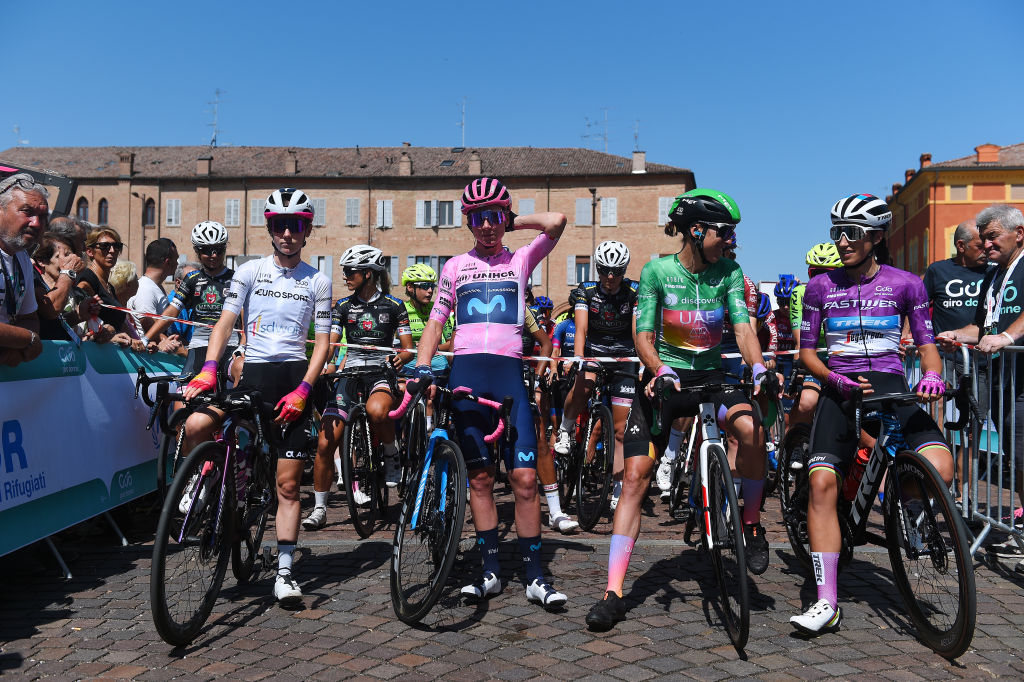
For 34 years, the Giro d'Italia Donne – or Giro Rosa – has been the longest race on the women’s calendar and, until last year, the only Grand Tour the women’s peloton were able to contest. At ten stages long and often featuring iconic and challenging climbs along the way, the Giro marked one of the only opportunities for the women to take on anything close to a men’s Grand Tour.
As a result of its length – and longevity – the Giro derived a level of prestige that, until the advent of the Tour de France Femmes in 2022, positioned it as the biggest, most important stage race on the women’s calendar.
But that prestige hasn’t always been fully deserved. While the Giro d'Italia Donne has usually succeeded in delivering a parcours fit for a world-class peloton, the various organisers have rarely managed to match the rest of the race to that standard.
From route profiles that belie the true gradient of a climb in an all-important ITT to gravel stages that go beyond any challenge Strade Bianche presents to paltry prize money and lack of live coverage, the Giro d'Italia Donne has put riders – and fans – through a lot in previous years.
While some of these shortcomings are the result of a lack of resources, including finances, there has also been a strong sense of complacency within the chaotic nature of the race organisation.
As the only race of its length and stature on the women’s calendar, the Giro organisers could rely on a ‘build it, and they will come’ mentality, knowing that, regardless of how the actual event was run, if the parcours did the job then the riders would be on the startline.
After the organisers failed to provide live coverage of the 2020 edition – a UCI requirement for WWT level races – the Giro was demoted for the following year to 2.Pro after switching hands to new organisers, PMG Starlight. With the race now in their hands, PMG Starlight set about making numerous promises around prize money, live TV coverage, and other improvements that left everyone hopeful that the race had turned over a new leaf.
In the end, though, for the 2021 edition, the live coverage was patchy and sporadic, including no live images of the queen stage at all. Still, it was enough for the race to remain at WorldTour level and was a vast improvement from the previous year. Things were looking hopeful for future editions of the Giro Donne.
After the announcement of the re-vamped Tour de France Femmes for 2022, the Giro stepped up their game again, announcing the route a whole five months ahead of the race – in previous years, route announcements had come mere weeks before the race – and a prize purse of €250,000 alongside a promise of two hours of live coverage each day. When the race came around, just weeks before the start of the Tour, PMG Starlight’s Giro delivered on its promise. Were we finally going to have a professionally-run Giro for the women?
However, fast forward to 2023 and with the announcement of men’s Giro organisers, RCS taking over the race – which is owned by the Italian federation who delegate contracts to organisers to run it – all of the fanfare and enthusiasm from Starlight disappeared when it came to organise the 2023 edition.
Before 2022 and the Tour de France Femmes, the Giro was seen as a chaotic but necessary addition to the calendar which, although it wasn’t especially reliable, would always attract the best riders regardless. Now, having experienced a Grand Tour that has extended the professionalism that the women’s peloton deserves the standard has, rightly, been raised.
Thanks to both its position on the calendar and the considerably greater prestige of the Tour, many of the peloton’s top riders have chosen to snub the Giro in favour of the Tour. Those who have may well be glad to have avoided the uncertainty that surrounded the race.
In the weeks leading up to the 2023 Giro, the route details remained unclear, and the race itself looked to be in jeopardy entirely until the eleventh-hour thanks to a spat between PMG Starlight and the Italian Federation over who should pay for live coverage. Even the prize money, which PMG Starlight announced with great fanfare in 2022, was reduced to a mere €2,000 for the overall winner.
Thankfully, on the eve of the 34th edition of the race – the last before RCS takes over – we now have both a route and a promise of live coverage. Whether the live coverage will come to fruition or how the race will play out remains to be seen, but with this year’s race already proving to be a step back from previous editions, we can only hope that there is truth in the adage that things must get worse before they get better.







